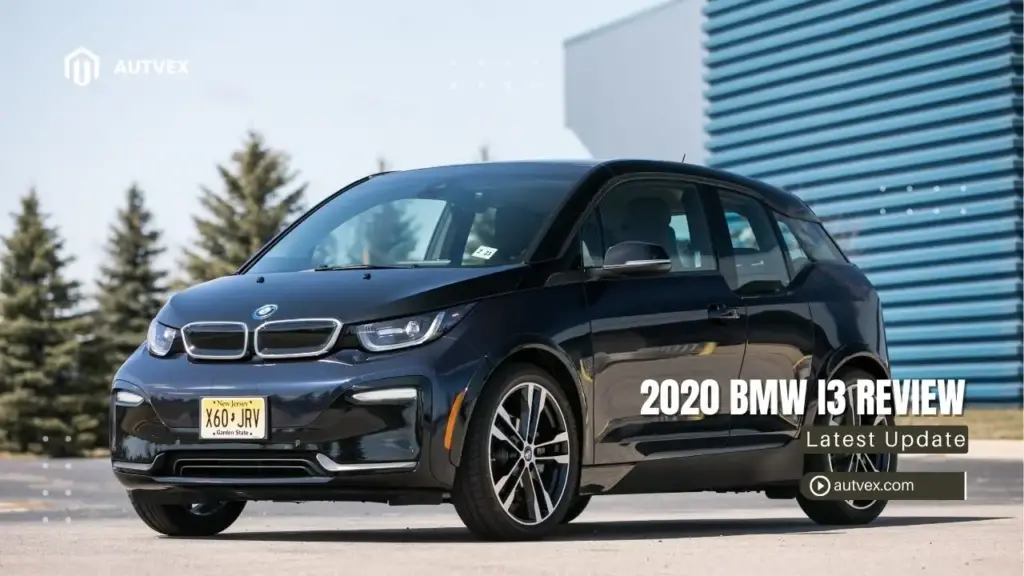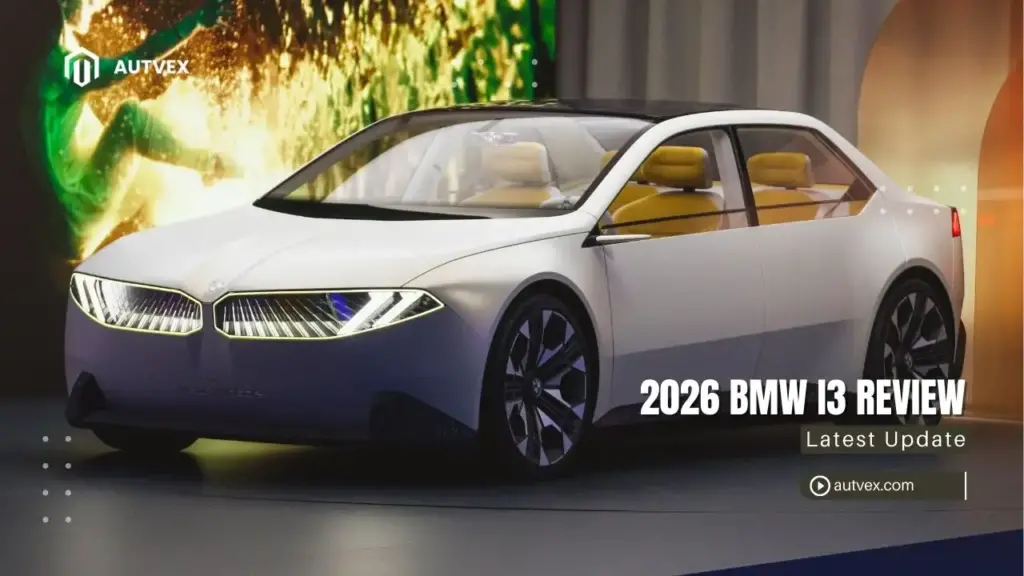You may also like:
The 2020 BMW i3 represents a premium electric city car with unique carbon fiber construction and sustainable materials, but faces significant challenges with its limited 153-mile range compared to 259+ mile competitors like the Chevrolet Bolt EV[1]. Originally priced between $44,500-$54,990, strong depreciation has created attractive used car opportunities with current values around $15,563 for well-maintained examples[2]. This distinctive electric hatchback excels in urban environments with its sporty aluminum chassis and innovative design, but serves best as a secondary vehicle rather than primary family transportation due to cramped rear seating and range limitations[3]. Understanding how long it takes to buy a car becomes particularly important when considering specialized vehicles like the i3 that require thorough inspection of unique components.
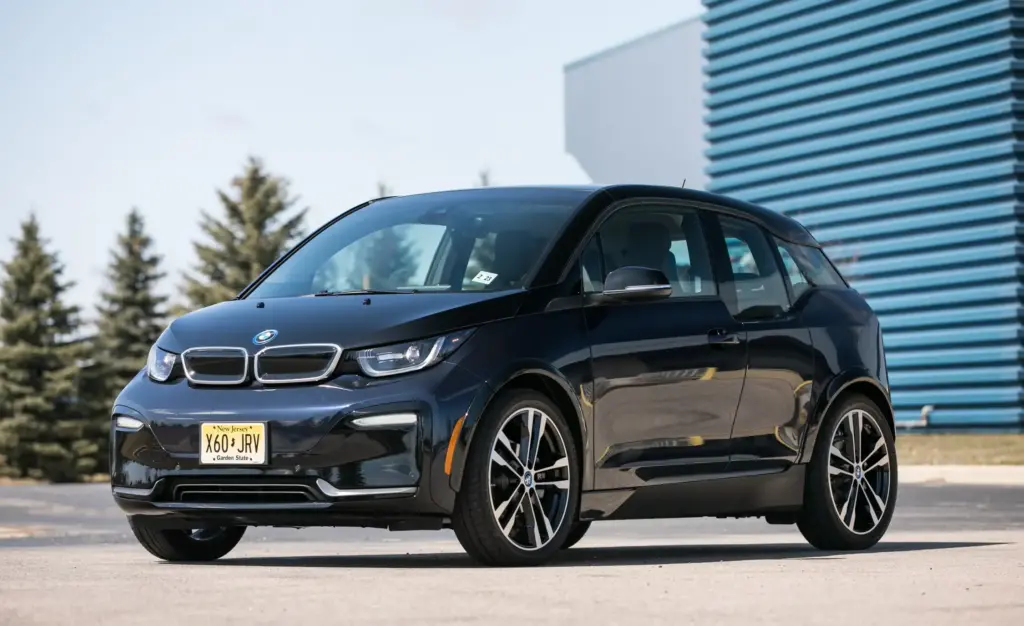
Quick Verdict: Is the 2020 BMW i3 Worth It?
Bottom Line Summary
The 2020 BMW i3 stands out as BMW’s final major update before the model’s 2022 discontinuation, incorporating years of refinement while maintaining its polarizing design philosophy. This model year represents the mature iteration of BMW’s experimental electric vehicle approach.
Core Value Proposition:
- Premium electric city car with distinctive carbon fiber reinforced plastic construction
- Limited 153-mile EPA range significantly trailing competitors like Chevrolet Bolt EV’s 259 miles
- High original pricing of $44,500-$54,990 but substantial depreciation creates value opportunities
- Urban-focused design optimized for city commuting rather than long-distance family transport
The i3’s unique positioning appeals to environmentally conscious buyers seeking BMW luxury with sustainable materials, though practical limitations restrict its mainstream appeal compared to conventional alternatives.
Pros vs Cons Overview
Comprehensive Strengths and Weaknesses Analysis:
| Strengths | Weaknesses |
| Unique design with 80% recycled dashboard materials | Severely limited range at 153 miles vs competitors |
| Luxurious interior featuring premium BMW finishes and sustainable materials | Expensive pricing structure compared to Chevrolet Bolt EV |
| Sporty driving experience with aluminum chassis and rear motor placement | Cramped rear passenger space limiting family practicality |
| Standard Apple CarPlay integration and advanced connectivity | Slower charging speeds at 50kW vs modern EV standards |
| Excellent urban maneuverability with 32.4-foot turning radius | Highway stability concerns due to short wheelbase |
Market Context:
The 2020 i3’s specifications pale against contemporary competition, with Tesla Model 3 offering 267-322 miles range and Chevrolet Bolt EV providing 259 miles at $37,495 versus the i3’s premium pricing[1].
Who Should Buy vs Skip
Ideal Purchase Scenarios:
- Urban dwellers with consistent daily commutes under 100 miles requiring premium features
- Environmental enthusiasts prioritizing sustainable materials and carbon-neutral construction methods
- Secondary vehicle buyers complementing longer-range primary transportation options
- Design appreciators seeking distinctive automotive styling with BMW heritage appeal
Alternative Recommendations:
Consider Tesla Model 3, Chevrolet Bolt EV, or Hyundai Kona Electric when range requirements exceed 200 miles daily or when family space takes priority over unique styling. The 2023 BMW 2-Series Gran Coupe offers similar four-door BMW luxury with conventional powertrains for buyers seeking familiar technology.
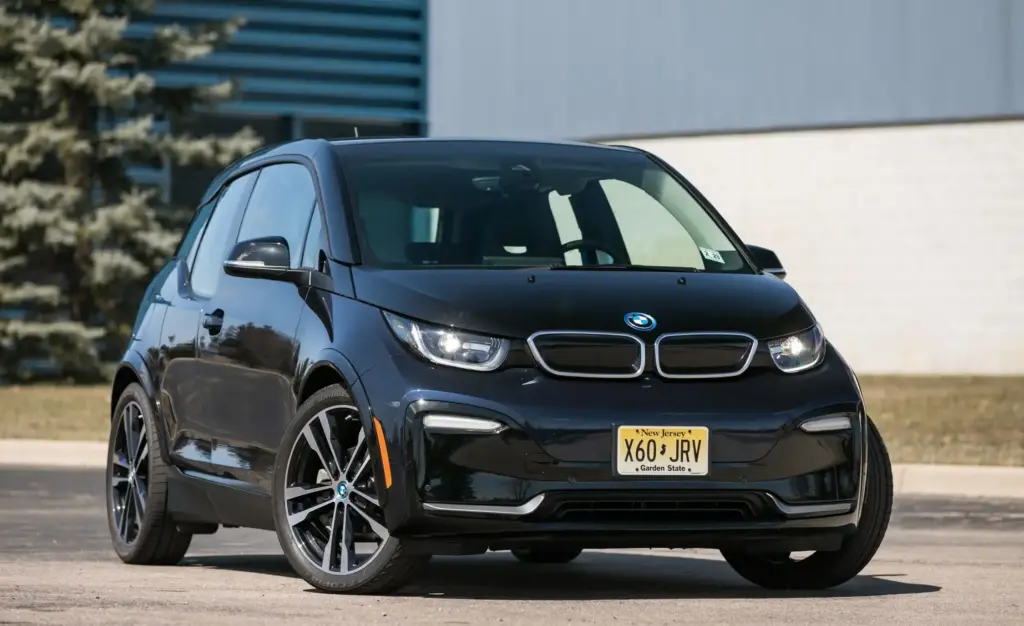
2020 BMW i3 Performance & Engine Analysis
Electric Motor Specifications & Range
The 2020 i3 utilizes a sophisticated rear-mounted synchronous electric motor delivering immediate torque and responsive acceleration characteristics optimized for urban driving scenarios.
Motor Performance Specifications:
| Specification | Base i3 | i3s Performance |
|---|---|---|
| Motor Power | 168 horsepower @ 4,800 rpm | 181 horsepower @ 7,000 rpm |
| Torque Output | 184 lb-ft @ 0 rpm | 199 lb-ft @ 0 rpm |
| 0-60 mph | 7.2 seconds | 6.8 seconds |
| Top Speed | 93 mph (electronically limited) | 99 mph (electronically limited) |
| Battery Capacity | 42.2 kWh lithium-ion | 42.2 kWh lithium-ion |
| EPA Range | 153 miles | 153 miles |
Charging Infrastructure Compatibility:
- Level 2 AC: 7.0 hours @ 7.7kW for complete charge
- DC Fast Charging: 42 minutes (10-80%) @ 50kW maximum
- Level 1 Emergency: 20+ hours @ 120V household outlet
The i3’s 50kW charging limitation significantly impacts long-distance travel compared to modern EVs supporting 150kW+ charging speeds[3].
Range Extender vs Pure Electric Options
BMW offered both battery electric vehicle (BEV) and range extender (REx) configurations, each serving different buyer needs and usage patterns.
Configuration Comparison:
| Feature | BEV Model | REx Model |
|---|---|---|
| Electric Range | 153 miles EPA | 126 miles EPA |
| Total Range | 153 miles | ~200 miles with generator |
| Original MSRP | $44,500 (base i3) | $48,500 (+$4,000) |
| Generator Engine | None | 647cc 2-cylinder gasoline |
| Fuel Tank | None | 2.4 gallons |
| Additional Weight | None | ~200 pounds |
Range Extender Limitations:
The gasoline generator functions solely as a battery charger, not directly powering wheels, with limited output sufficient for maintaining charge but not enhancing performance. Autvex analysis shows REx models experience more maintenance complexity while providing marginal range benefits for most users.
Driving Dynamics & Urban Performance
The i3’s unique construction philosophy prioritizes urban agility over highway comfort, creating distinctive driving characteristics requiring buyer understanding.
Urban Performance Advantages:
- Exceptional maneuverability with 32.4-foot turning radius enabling tight parking situations
- Instant torque response eliminating conventional powertrain lag during city acceleration
- Low center of gravity from floor-mounted battery improving cornering stability
- Regenerative braking effectiveness allowing near-complete stops using accelerator pedal only
Highway Limitations:
The 101.2-inch wheelbase contributes to stability challenges during highway driving, particularly in crosswinds or when passing large vehicles, creating a less composed ride quality above 65 mph compared to conventional vehicles.
Understanding how many miles is good for a used car becomes crucial when evaluating i3 examples, as electric vehicle battery condition requires different assessment criteria than traditional powertrains.
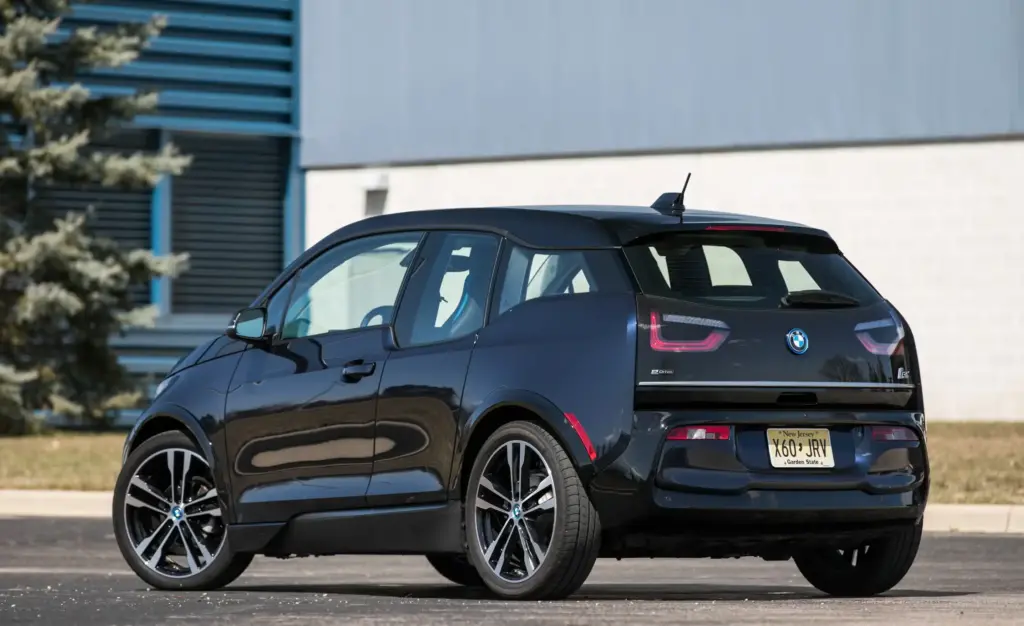
2020 BMW i3 Style & Design Philosophy
Exterior Design & Construction Materials
The 2020 i3 continues BMW’s revolutionary approach to automotive construction through extensive use of advanced materials and distinctive proportions that challenge conventional design expectations.
Revolutionary Construction Elements:
- Carbon fiber reinforced plastic (CFRP) body reducing overall weight to 2,972 pounds
- Unique “suicide door” configuration with rear-hinged doors eliminating B-pillars
- Narrow tire setup (155/70R19 front, 175/60R19 rear) optimizing aerodynamic efficiency
- Floating roof design with contrasting accents creating visual lightness
Aerodynamic Achievements:
The i3 achieves a coefficient of drag of 0.29 through careful body sculpting, active grille shutters, and streamlined underbody panels, contributing significantly to range optimization despite the limited battery capacity.
Design Reception:
Consumer response remains polarized, with environmental enthusiasts embracing the futuristic aesthetic while mainstream buyers often prefer conventional styling found in competitors like Tesla Model 3 or Chevrolet Bolt EV.
Color Options & Customization
BMW offered comprehensive personalization options reflecting the i3’s premium positioning and sustainable material philosophy.
2020 Exterior Color Palette:
| Color Name | Accent Color | Category | Premium Cost |
|---|---|---|---|
| Capparis White | BMW i Frozen Blue | Standard | No charge |
| Fluid Black | BMW i Frozen Blue | Metallic | +$550 |
| Mineral Grey | BMW i Frozen Blue | Metallic | +$550 |
| Imperial Blue Metallic | Frozen Grey | Metallic | +$550 |
| Jucaro Beige Metallic | Frozen Grey | Metallic | +$550 |
| Melbourne Red Metallic | Frozen Grey | Metallic | +$550 |
Interior “World” Configurations:
- Deka World: Standard cloth materials with dark color scheme
- Mega World: Cloth/leatherette combination (+$1,400)
- Giga World: Premium cloth with leather accents (+$2,000)
- Tera World: Full Vernasca leather upholstery (+$2,600)
Size & Practicality Assessment
The i3’s compact exterior dimensions create both advantages and limitations affecting daily usability and passenger accommodation.
Space Utilization Analysis:
| Interior Dimension | Measurement | Practical Impact |
|---|---|---|
| Overall Length | 158.3 inches | Excellent urban parking capability |
| Front Headroom | 39.6 inches | Generous space due to tall roofline |
| Front Legroom | 40.5 inches | Comfortable for drivers up to 6’2″ |
| Rear Headroom | 37.2 inches | Adequate for adults under 5’10” |
| Rear Legroom | 31.9 inches | Tight for adult passengers |
| Cargo Space | 15.1 cubic feet | Limited but sufficient for urban use |
Practicality Limitations:
The rear seating configuration accommodates children comfortably but challenges adult passengers during longer journeys, making the i3 more suitable as a personal commuter vehicle than family transportation.
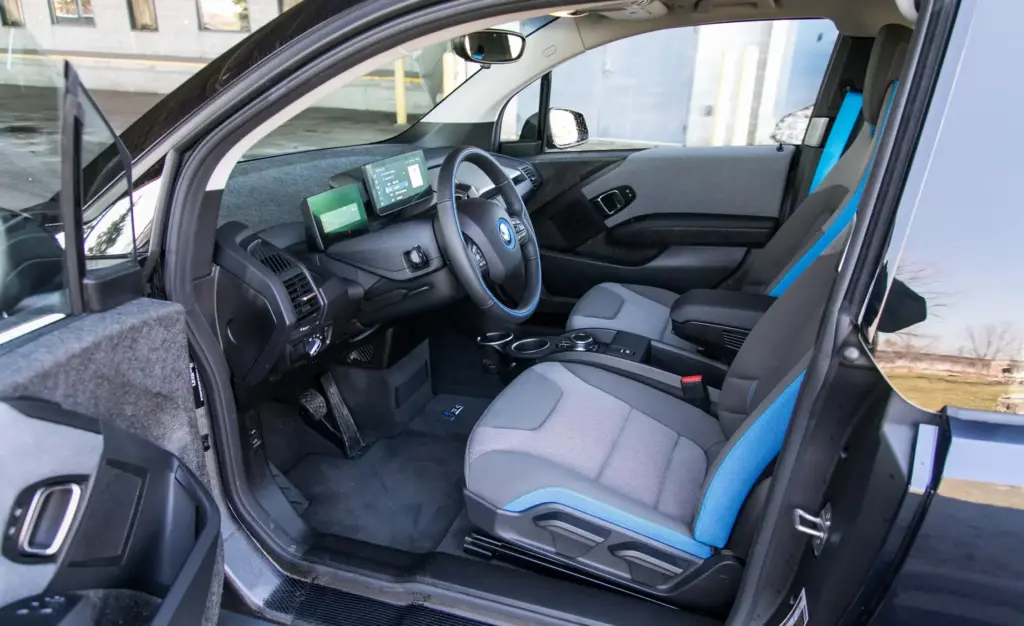
Interior Quality & Technology Features
Cabin Design & Premium Materials
BMW’s sustainable luxury approach distinguishes the i3 interior through innovative material choices and thoughtful design integration that prioritizes environmental consciousness without sacrificing premium appointments.
Sustainable Material Innovation:
- 80% recycled dashboard plastics reducing environmental impact significantly
- Renewable kenaf fibers replacing petroleum-based traditional materials throughout cabin
- Open-pore eucalyptus wood sourced from certified sustainable forestry operations
- Optional wool blend fabrics providing luxury texture without environmental compromise
Interior Space Characteristics:
| Comfort Feature | Standard Availability | Premium Upgrade |
|---|---|---|
| Heated Front Seats | Standard all trims | Ventilation not available |
| Automatic Climate Control | Single-zone standard | Dual-zone not offered |
| Interior Lighting | LED ambient standard | Customizable color options |
| Sound Insulation | Good for city driving | Adequate highway noise control |
The cabin design emphasizes openness and visibility through large windows and minimalist dashboard layout, creating an airy feeling despite compact exterior dimensions.
Technology & Infotainment Systems
The 2020 i3 features BMW’s iDrive system with reasonable functionality for its era, though lacking some modern integration capabilities expected by contemporary buyers.
Standard Technology Equipment:
- 6.5-inch central display (upgradeable to 10.25-inch with Technology package)
- Standard Apple CarPlay integration providing seamless iPhone connectivity
- Missing Android Auto compatibility limiting smartphone integration options
- Navigation system with real-time traffic updates and charging station locations
Available Technology Upgrades:
- Technology + Driving Assistant Package ($1,700): Enhanced navigation, adaptive cruise control, forward collision mitigation
- Harman Kardon Premium Audio ($875): 12-speaker system with enhanced acoustics
- Wireless Charging Pad ($500): Convenient device charging with Wi-Fi hotspot capability
Connectivity Limitations:
Unlike Tesla’s comprehensive over-the-air update system, the i3 provides limited software evolution capability, requiring occasional dealer visits for system updates.
Comfort & Convenience Features
Front seat comfort ranks among the i3’s stronger attributes, providing adequate support for longer drives despite the vehicle’s urban focus.
Comfort Assessment:
- Front seat design offers good lateral support with effective heating systems
- Climate control effectiveness adequate but impacts range significantly during extreme weather
- Storage solutions include practical door pockets and center console organization
- Rear passenger comfort limited by tight legroom and unique door access requirements
Convenience Features:
- Keyless entry/start standard across all trim levels
- Auto-dimming mirrors reducing glare during night driving
- Front/rear parking sensors assisting urban maneuvering and parking
Those considering technology-focused alternatives might explore best EV chargers to optimize home charging infrastructure for any electric vehicle purchase decision.
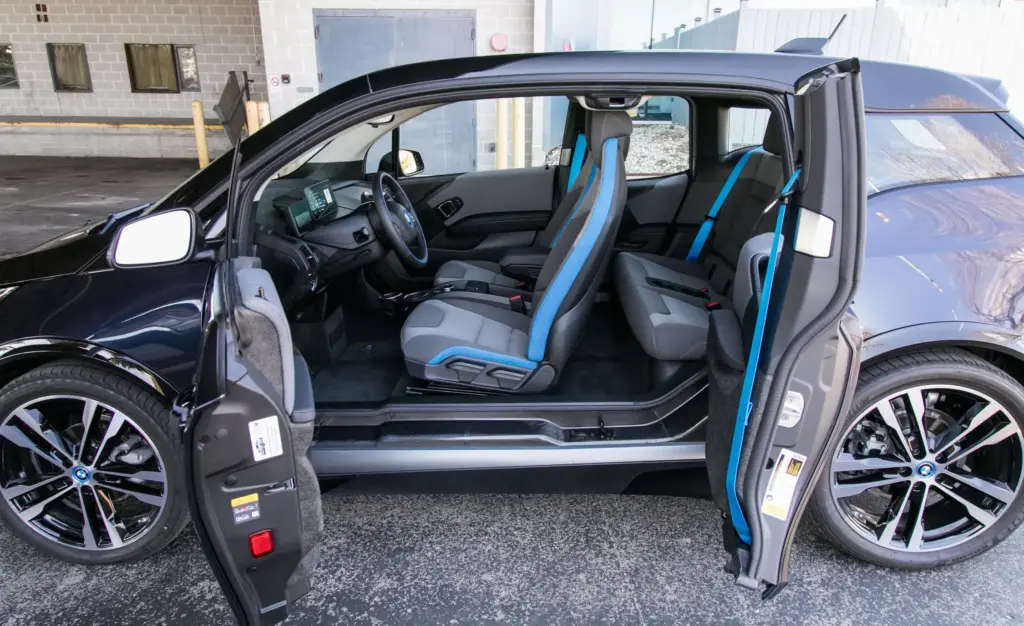
2020 BMW i3 Pricing & Value Analysis
Original MSRP Structure & Trim Levels
The 2020 i3 launched with premium pricing reflecting BMW’s positioning as a luxury electric vehicle rather than mass-market transportation.
Original Pricing Structure:
| Trim Level | Original MSRP | Key Equipment | Target Buyer |
|---|---|---|---|
| i3 Base | $44,500 | 170hp motor, 19″ wheels, standard tech | Urban commuters |
| i3s | $47,650 | 181hp motor, 20″ wheels, sport suspension | Performance-minded buyers |
| i3 REx | $48,500 | Range extender, extended capability | Range-anxious customers |
| i3s REx | $51,500 | Combined performance and range | Premium buyers |
Equipment Value Analysis:
Standard equipment included comprehensive features typically requiring option packages on competitors, including leather-appointed seating, navigation system, and advanced safety systems, though total pricing exceeded most rival offerings significantly.
Current Used Market Values & Depreciation
Dramatic depreciation creates compelling used car opportunities for buyers accepting the i3’s practical limitations while gaining access to premium electric vehicle ownership.
Current Market Values (2025):
| Condition | Mileage Range | Current Price | Depreciation % |
|---|---|---|---|
| Excellent | Under 30,000 miles | $18,000-22,000 | ~55-60% |
| Good | 30,000-60,000 miles | $14,000-18,000 | ~60-70% |
| Average | 60,000+ miles | $10,000-14,000 | ~70-80% |
According to Kelley Blue Book data, 2020 i3 models average $15,563 in current market conditions, representing substantial value loss from original pricing but creating accessibility for budget-conscious premium EV buyers[2].
Depreciation Comparison:
The i3 loses approximately 66.1% of original value over five years compared to Chevrolet Bolt EV’s 57.6% depreciation rate, reflecting market preference for conventional styling and superior range capabilities[4].
Total Cost of Ownership Analysis
Electric vehicle ownership provides operational advantages through reduced fuel costs, though specialized maintenance requirements and insurance considerations affect total ownership expenses.
Annual Ownership Cost Breakdown:
| Cost Category | Annual Estimate | Comparison Notes |
|---|---|---|
| Electricity | $600-900 | 3-4¢ per mile vs 12-15¢ gasoline |
| Insurance | $1,800-2,400 | Higher due to carbon fiber construction |
| Maintenance | $800-1,200 | Minimal routine service needs |
| Registration | $300-500 | Varies by state, some EV discounts |
| Total Annual | $3,500-5,000 | Competitive with luxury ICE vehicles |
Ownership Benefits:
Many metropolitan areas provide HOV lane access, preferred parking, and reduced toll rates for electric vehicles, adding value beyond direct cost savings. Understanding what happens when your car is totaled but still drivable becomes relevant given the i3’s unique construction affecting insurance claim processing.
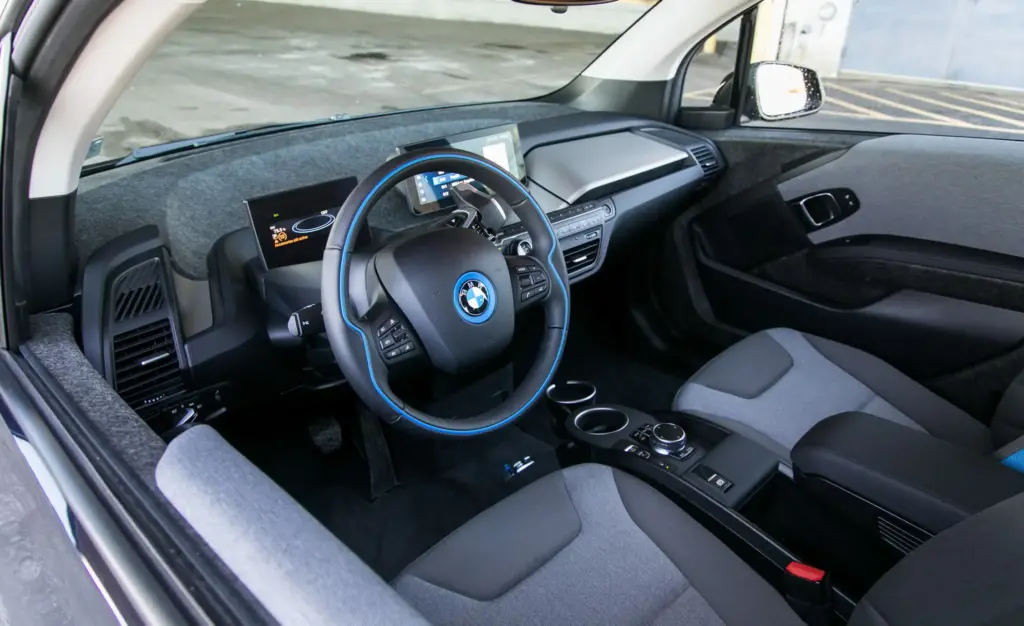
Safety Features & Crash Protection
Standard Safety Equipment & Ratings
The 2020 i3 incorporates comprehensive active and passive safety systems designed around its unique carbon fiber construction and electric powertrain architecture.
Standard Safety Features:
- Forward Collision Warning with pedestrian detection and automatic emergency braking
- Multiple airbag system including front, side, and curtain airbags with rollover sensors
- Dynamic Stability Control (DSC) with ABS and brake assist functionality
- Active Park Distance Control with rear-view camera and obstacle detection
- ISOFIX child seat anchors on rear seating positions for secure installation
Carbon Fiber Safety Advantages:
The unique construction provides exceptional structural integrity during impacts while the low center of gravity from floor-mounted batteries enhances stability and reduces rollover risk compared to conventional vehicles.
Safety Rating Status:
While comprehensive NHTSA or IIHS ratings aren’t available for the specific 2020 model year, European NCAP testing awarded the i3 platform strong safety scores throughout its production run[5].
Advanced Driver Assistance Features
Optional technology packages expand the i3’s safety capabilities with semi-autonomous features, though lacking the comprehensive systems found in Tesla Model 3 or other contemporary EVs.
Available Driver Assistance:
- Adaptive Cruise Control maintaining set distances with stop-and-go capability
- Lane Departure Warning alerting drivers to unintended lane changes
- Speed Limit Information display providing contextual driving data
- Cornering Lights enhancing visibility during turning maneuvers
- Automated Parking System providing steering assistance for parallel parking
Technology Package Benefits:
The $1,700 Technology + Driving Assistant package significantly enhances safety capabilities while improving daily usability for urban commuting scenarios where the i3 excels most effectively.
Used Car Safety Considerations
Purchasing used electric vehicles requires specific attention to high-voltage system integrity and specialized component condition assessment.
Critical Safety Inspections:
- Battery thermal management system integrity preventing dangerous overheating
- High-voltage component protection ensuring proper insulation and emergency disconnects
- Carbon fiber body damage assessment requiring specialized repair techniques
- Charging system safety including port condition and cable integrity
Emergency Response:
The i3 includes automatic high-voltage system isolation during accidents, with emergency responders trained on BMW’s electric vehicle safety protocols for proper incident management.
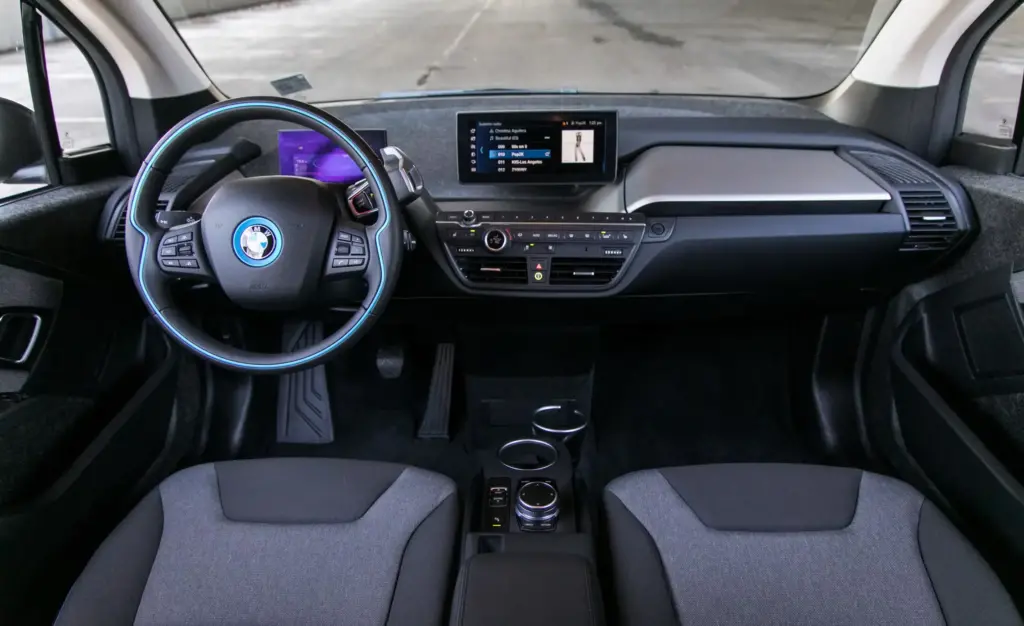
Reliability & Common Problems
Overall Reliability Rating & Industry Position
The 2020 i3 demonstrates solid reliability performance with a 94.5% reliability rating, ranking 6th among 18 electric vehicles in comprehensive industry surveys[6].
Reliability Performance Context:
- BMW i3: 94.5% reliability score (6th place)
- Above: Mini Electric, Nissan Leaf, Volkswagen ID.3
- Below: Hyundai Ioniq, Renault Zoe, other premium EVs
- Brand Performance: BMW ranked 8th of 31 manufacturers with 94% overall score
Long-term Ownership Satisfaction:
Owner surveys indicate generally positive experiences with daily reliability, though specialized service requirements and component costs create concerns for some buyers seeking conventional vehicle ownership experiences.
Known Issues & Problem Areas
Despite strong overall reliability, the i3 experiences several recurring issues that potential buyers should understand before purchase decisions.
Common Problem Areas:
| Issue Category | Frequency | Typical Repair Cost | Resolution Time |
|---|---|---|---|
| Charging System Faults | Moderate | $500-1,500 | 1-2 weeks |
| Non-Motor Electrical Issues | Low-Moderate | $300-1,200 | 3-7 days |
| Suspension Components | Low | $800-2,000 | 1-2 weeks |
| Bodywork Problems | Low | $1,000-3,000 | 2-4 weeks |
| Range Extender Engine (REx only) | Moderate | $800-2,500 | 1-3 weeks |
Range Extender Specific Issues:
REx models experience periodic warning lights, fuel system complications, and maintenance complexity that pure electric versions avoid entirely, supporting Autvex experts’ recommendations to prioritize BEV configurations when possible.
Maintenance Requirements & Service Costs
Electric vehicles generally require less routine maintenance than conventional cars, though the i3’s specialized construction creates unique service requirements.
Routine Maintenance Schedule:
- Brake fluid replacement every 2 years regardless of mileage due to system design
- Cabin air filter replacement annually for optimal HVAC performance
- Battery cooling system inspection every 3 years ensuring thermal management
- Tire rotation every 5,000-7,500 miles due to unique tire sizes and wear patterns
Annual Maintenance Cost Estimates:
| Service Category | BMW Dealer | Independent Shop | DIY Possibility |
|---|---|---|---|
| Basic Service | $600-800 | $400-600 | Limited |
| Brake Service | $400-600 | $300-450 | Not recommended |
| Tire Replacement | $1,200-1,600 | $900-1,200 | Possible |
| Software Updates | $150-250 | Not available | Not possible |
Parts Availability:
Specialized components like unique tire sizes and carbon fiber body panels require longer lead times and higher costs compared to conventional vehicles, though basic maintenance items remain readily available.
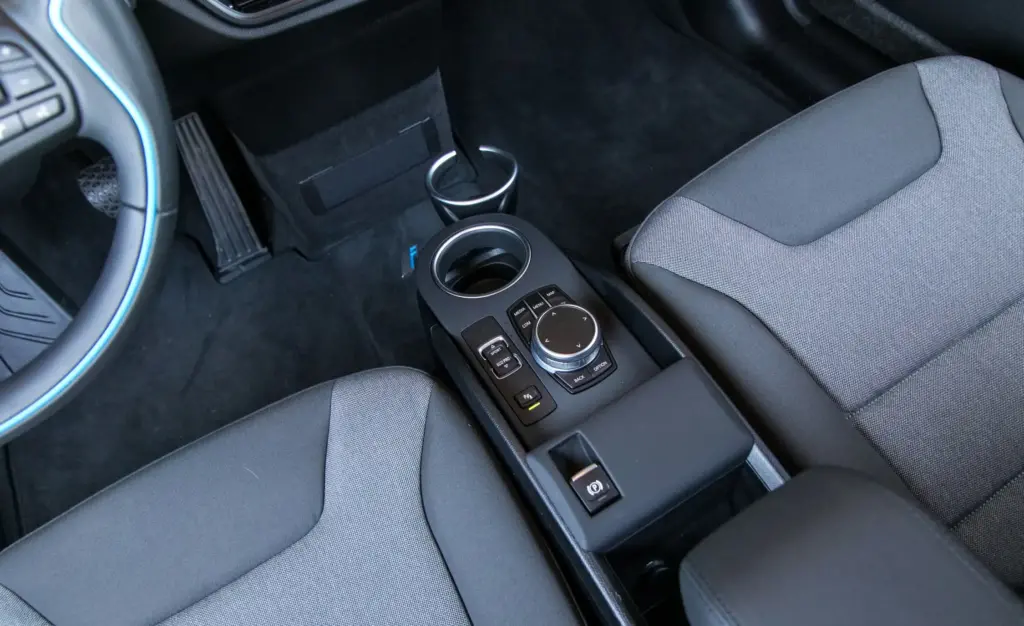
Competitive Comparison & Alternatives
vs Tesla Model 3 (2020)
The Tesla Model 3 represents the i3’s primary competitor in the premium electric sedan market, though serving distinctly different buyer priorities and usage patterns.
Direct Specification Comparison:
| Feature | 2020 BMW i3 | 2020 Tesla Model 3 | Advantage |
|---|---|---|---|
| EPA Range | 153 miles | 267-322 miles | Tesla |
| Charging Speed | 50kW maximum | 170kW+ capability | Tesla |
| 0-60 mph | 7.2 seconds | 5.3-3.1 seconds | Tesla |
| Interior Materials | Sustainable luxury | Minimalist synthetic | BMW |
| Service Network | 350+ BMW dealers | Limited Tesla centers | BMW |
| Used Price Range | $14,000-22,000 | $28,000-45,000 | BMW |
Technology Integration Philosophy:
Tesla’s unified software approach provides seamless operation and continuous updates, while BMW maintains traditional luxury vehicle interfaces with physical controls and conventional instrumentation appealing to different buyer preferences.
vs Chevrolet Bolt EV (2020)
The Chevrolet Bolt EV offers superior value proposition and practical capability compared to the premium-positioned i3, though sacrificing luxury appointments and unique construction.
Value Proposition Analysis:
| Feature | BMW i3 | Chevrolet Bolt EV | Winner |
|---|---|---|---|
| Original MSRP | $44,500-51,500 | $37,495 | Bolt |
| Current Used Price | $14,000-22,000 | $16,000-26,000 | i3 |
| EPA Range | 153 miles | 259 miles | Bolt |
| Interior Space | 4 seats, 15.1 cu ft cargo | 5 seats, 16.9 cu ft cargo | Bolt |
| Brand Prestige | Premium luxury | Mass market | i3 |
| Charging Speed | 50kW | 55kW | Bolt |
Market Positioning:
The Bolt EV targets practical transportation needs with longer range and conventional styling, while the i3 appeals to buyers prioritizing distinctive design and premium materials over maximum utility.
vs Hyundai Kona Electric & Kia Niro EV
Korean manufacturers offer compelling alternatives with superior range capabilities, lower pricing, and comprehensive warranty coverage compared to the BMW i3’s premium positioning.
Korean Alternative Assessment:
| Vehicle | Range | Starting Price | Warranty | Value Rating |
|---|---|---|---|---|
| BMW i3 | 153 miles | $44,500 original | 4yr/50k basic | Premium/Limited |
| Hyundai Kona Electric | 258 miles | $37,390 | 10yr/100k battery | Excellent/Practical |
| Kia Niro EV | 239 miles | $39,090 | 10yr/100k battery | Good/Reliable |
Feature Comparison:
Korean alternatives provide conventional SUV practicality with significantly longer range and lower ownership costs, though lacking the BMW’s distinctive styling and sustainable material innovation that appeals to environmentally conscious luxury buyers.
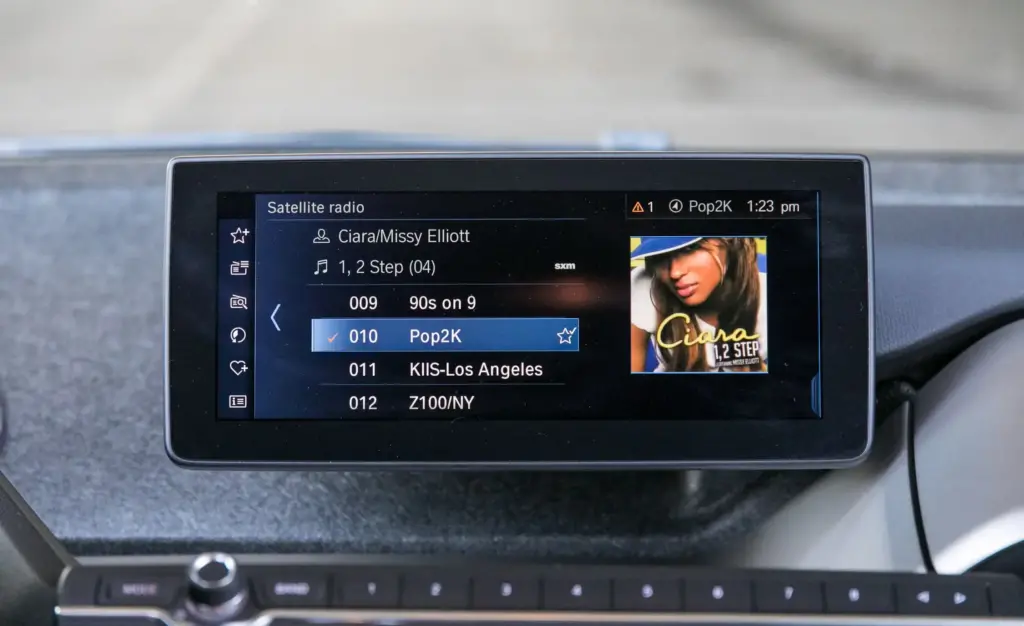
Buying Guide & Recommendations
Best Use Cases for 2020 i3 Purchase
The 2020 i3 serves specific buyer segments exceptionally well while proving unsuitable for mainstream family transportation, requiring careful self-assessment before purchase.
Ideal Ownership Scenarios:
- Urban professionals with daily commutes under 75 miles round-trip and reliable home charging
- Secondary vehicle buyers complementing longer-range primary transportation for family needs
- Environmental enthusiasts prioritizing sustainable construction and materials over maximum practicality
- Design appreciators valuing distinctive styling and BMW heritage over conventional appearance
Geographic Suitability Assessment:
| Location Type | Recommendation | Key Factors |
|---|---|---|
| Dense Urban Areas | Highly Recommended | Short distances, charging infrastructure, parking advantages |
| Suburban Communities | Conditionally Suitable | Moderate distances, home charging essential |
| Rural Areas | Not Recommended | Limited charging, long daily distances |
| Cold Climates | Requires Consideration | Reduced winter range, heating energy consumption |
Red Flags & Deal Breakers When Buying Used
Potential buyers must identify specific warning signs during vehicle inspection to avoid problematic examples and ensure satisfactory ownership experiences.
Critical Inspection Points:
- Excessive mileage above 70,000 miles indicating potential battery degradation or component wear
- Charging system problems including damaged ports, cable wear, or inconsistent charging speeds
- Range extender engine issues such as warning lights, rough operation, or deferred maintenance
- Carbon fiber body damage requiring specialized repair techniques and expensive replacement costs
- Missing service records particularly for brake fluid changes and software updates
Documentation Requirements:
Verify complete maintenance history, recall completion status, warranty transfer eligibility, and any accident history affecting structural integrity or electrical systems before finalizing purchase decisions.
Pre-Purchase Inspection Checklist
Successful i3 purchases require specialized knowledge about electric vehicle evaluation and thorough assessment of unique components.
Comprehensive Inspection Protocol:
| System Category | Inspection Items | Professional Testing Required |
|---|---|---|
| Battery Health | Range testing, charging speed verification, thermal management | BMW diagnostic equipment |
| Charging System | Port condition, cable integrity, software functionality | Live charging test |
| Door Mechanisms | Smooth operation, proper alignment, seal effectiveness | Manual operation test |
| Suspension Components | Shock absorber condition, tire wear patterns, alignment | Professional assessment |
| Electrical Systems | All functions operational, no warning lights, software current | Comprehensive scan |
Market Research Strategy:
Use multiple valuation sources including Kelley Blue Book, Edmunds, and local market comparisons to establish fair pricing ranges, then negotiate based on vehicle condition, maintenance history, and identified repair needs.
The specialized nature of the i3 makes understanding current market conditions essential, as depreciation patterns continue evolving with the electric vehicle market’s rapid advancement and changing consumer preferences.
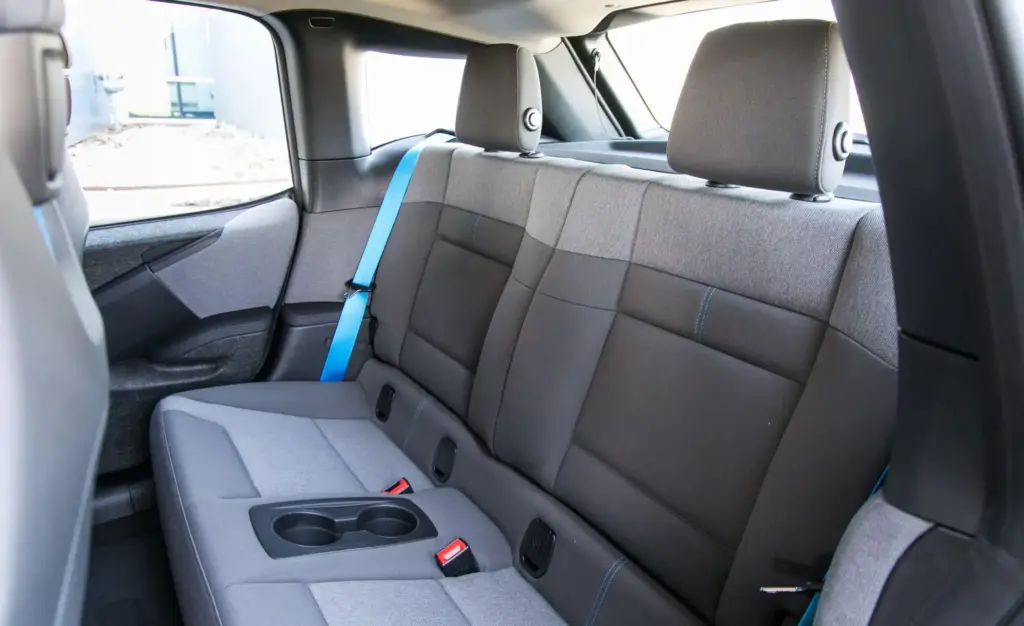
Key Takeaways
- Limited range reality – 153-mile capability suits urban commuting but restricts family travel options
- Significant depreciation advantage – 60-70% value loss creates accessible luxury EV ownership
- Premium materials genuinely sustainable – 80% recycled plastics and renewable fibers deliver environmental benefits
- Charging infrastructure critical – 50kW limitation requires careful trip planning vs modern EVs
- Reliability above average – 94.5% rating ranks 6th among 18 electric vehicle competitors
- Secondary vehicle optimal role – Best as urban commuter complementing longer-range primary transport
- Specialized service requirements – BMW dealer network necessary for optimal maintenance and repairs
FAQs
Is the 2020 BMW i3 reliable for daily use?
Yes, with a 94.5% reliability rating ranking 6th among 18 electric vehicles, the 2020 i3 provides dependable daily transportation for urban commuting within its 153-mile range, though specialized maintenance requirements add complexity[6].
How does the 2020 i3’s 153-mile range compare to competitors?
The 153-mile range significantly trails competitors like Chevrolet Bolt EV (259 miles), Tesla Model 3 (267-322 miles), and Hyundai Kona Electric (258 miles), making it suitable only for urban use[1].
What are the most common problems with the 2020 BMW i3?
Common issues include charging system faults ($500-1,500), non-motor electrical problems ($300-1,200), suspension component wear ($800-2,000), and range extender engine complications in REx models ($800-2,500)[6].
Should I buy the range extender or pure electric version?
Choose pure electric (BEV) for simplicity and lower maintenance costs if daily driving stays under 120 miles. Consider range extender (REx) only if regular longer trips exceed 150 miles and charging infrastructure remains limited.
How much does a used 2020 BMW i3 cost compared to when new?
Used 2020 i3 models range from $14,000-22,000 depending on condition and mileage, representing 60-70% depreciation from original MSRP of $44,500-51,500, creating significant value opportunities[2].
Is the BMW i3 better than the Chevrolet Bolt EV?
The Chevrolet Bolt EV offers superior range (259 vs 153 miles), better value, and more practical space, while the i3 provides premium materials, distinctive styling, and BMW luxury appointments at higher ownership costs[4].
What should I look for when buying a used 2020 i3?
Inspect battery health through range testing, verify charging system functionality, check door mechanism operation, review complete maintenance records, and confirm no carbon fiber body damage requiring specialized repairs[6].
How expensive is it to maintain a BMW i3 compared to gas cars?
Annual maintenance costs range $800-1,200 for basic service, plus $600-900 electricity versus $2,000-2,800 gasoline, totaling $3,500-5,000 annually compared to $5,100-7,300 for luxury ICE vehicles[3].
References
- Edmunds. (2020). 2020 BMW i3 Trims Comparison. https://www.edmunds.com/bmw/i3/2020/trims/
- Kelley Blue Book. (2025). 2020 BMW i3 Price, Value, Depreciation & Reviews. https://www.kbb.com/bmw/i3/2020/
- TrueCar. (2019). 2020 BMW i3 Review | Pricing, Trims & Photos. https://www.truecar.com/overview/bmw/i3/2020/
- iSeeCars. (2020). BMW i3 vs. Chevrolet Bolt EV. https://www.iseecars.com/compare/bmw-i3-vs-chevrolet-bolt_ev
- Cars.com. (2020). 2020 BMW i3 – Specs, Prices, Range, Reviews & Photos. https://www.cars.com/research/bmw-i3-2020/
- What Car. (2024). Used BMW i3 – 2013-2022 Reliability & Common Problems. https://www.whatcar.com/bmw/i3/hatchback/used-review/n874/reliability
- Driving.ca. (2025). 2020 BMW i3 vs 2020 Chevrolet Bolt EV. https://driving.ca/car-comparisons/2020-bmw-i3-vs-2020-chevrolet-bolt-ev/
- TopSpeed. (2025). Here’s Everything You Need To Know About BMW i3’s Reliability. https://www.topspeed.com/working-title-bmw-i3-reliability/

I am a senior automotive analyst at Autvex. Expert vehicle evaluations, in-depth reviews, and objective analysis helping readers make informed automotive decisions with years of industry experience.

